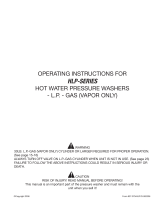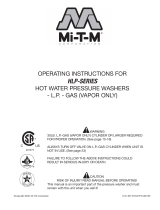
RCP 20, 25
Operator’s manual 3
Contents
1 Foreword .................................................................................................................... 5
2 Introduction ............................................................................................................... 6
2.1 Means of representation for this operator's manual ........................................... 6
2.2 Wacker Neuson representative .......................................................................... 7
2.3 Described machine types ................................................................................... 7
2.4 Identification of the machine............................................................................... 8
3 Safety ......................................................................................................................... 9
3.1 Principle.............................................................................................................. 9
3.2 Qualification of the operating personnel........................................................... 12
3.3 Protective gear ................................................................................................. 13
3.4 Transport .......................................................................................................... 14
3.5 Operating safety ............................................................................................... 14
3.6 Safety during the operation of hand machines................................................. 16
3.7 Safety during the operation of electric appliances............................................ 16
3.8 Safety during the operation of hydraulic machines........................................... 18
3.9 Maintenance..................................................................................................... 18
3.10 Safety and information labels ........................................................................... 19
3.11 Safety devices .................................................................................................. 20
4 Scope of delivery ....................................................................................................21
5 Description .............................................................................................................. 22
5.1 Application........................................................................................................ 22
5.2 Functionality ..................................................................................................... 22
5.3 Components and operator's controls................................................................ 22
6 Transport .................................................................................................................25
7 Operation .................................................................................................................26
7.1 Prior to starting the machine............................................................................. 26
7.2 Adjusting the machine ...................................................................................... 27
7.3 Starting up ........................................................................................................ 29
7.4 Decomissioning ................................................................................................ 32
8 Maintenance ............................................................................................................ 33
8.1 Maintenance schedule...................................................................................... 33
8.2 Maintenance work ............................................................................................ 34
8.2.1 Visual inspection for damage ............................................................... 34
8.2.2 Changing the knife................................................................................ 35
8.2.3 Checking the hydraulic oil level ............................................................ 36





















